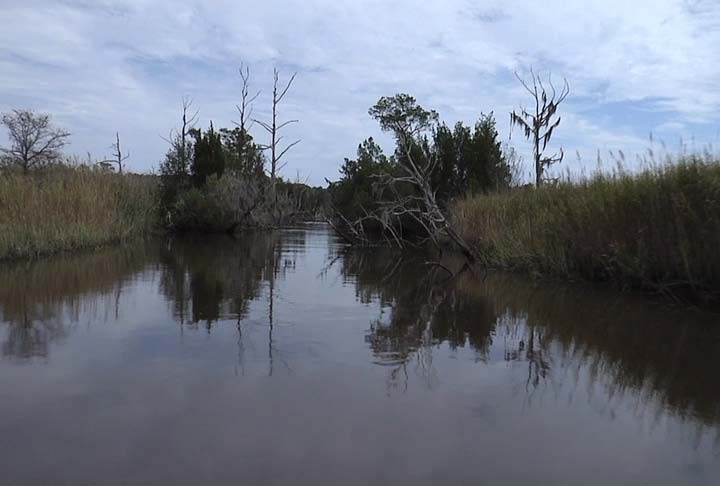
Rice Canal

 What is a Rice Canal?
What is a Rice Canal?
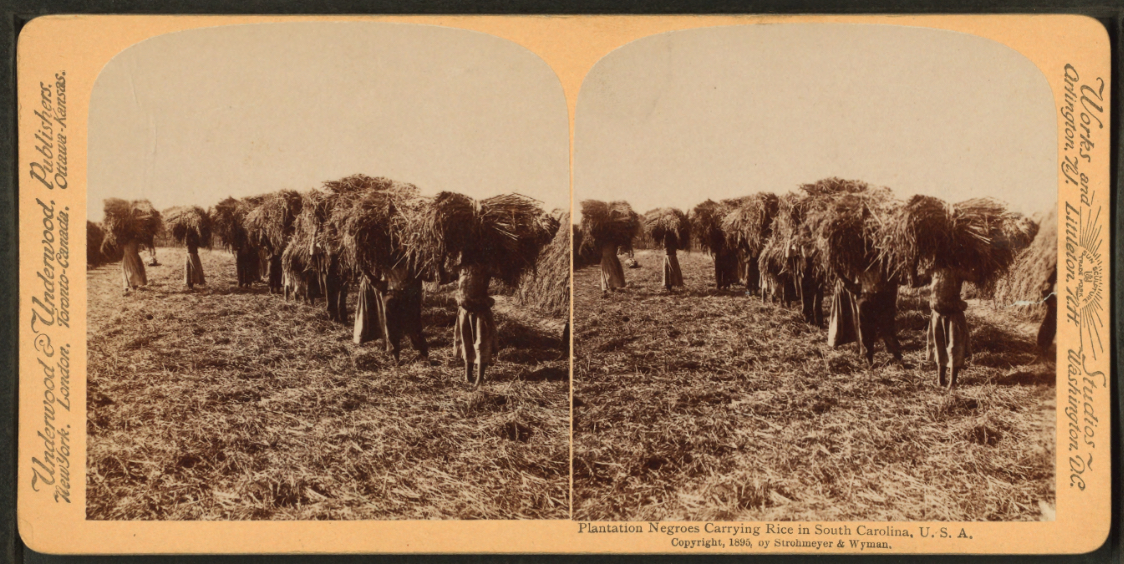
This canal, which seems so natural to the landscape today, is part of a former rice field, created by enslaved people at great expense to human life and well-being. There weren’t many places on the American continent where rice could have been cultivated with the methods that were used in the eighteenth and nineteenth centuries.
It had to be grown on rivers that were close enough to the ocean to be raised and lowered by ocean tides, but far enough from the ocean to keep salt water from getting into the rice fields – places that had low-lying rivers and low-lying swamps beside them. The Waccamaw Neck was such a place, and rice cultivation, which reached its peak right before the Civil War, made the planters of this region very wealthy.
 Wild Rice
Wild Rice
Fronds of wild rice, Zinzania aquatica, hang over the rice canals of Hobcaw Barony. Wild rice is a member of the grass family and close cousin to cultivated rice, Orzsa sativa. In addition to its value to humans, wild rice is an important food source for ducks, rails, blackbirds, and bobolinks.
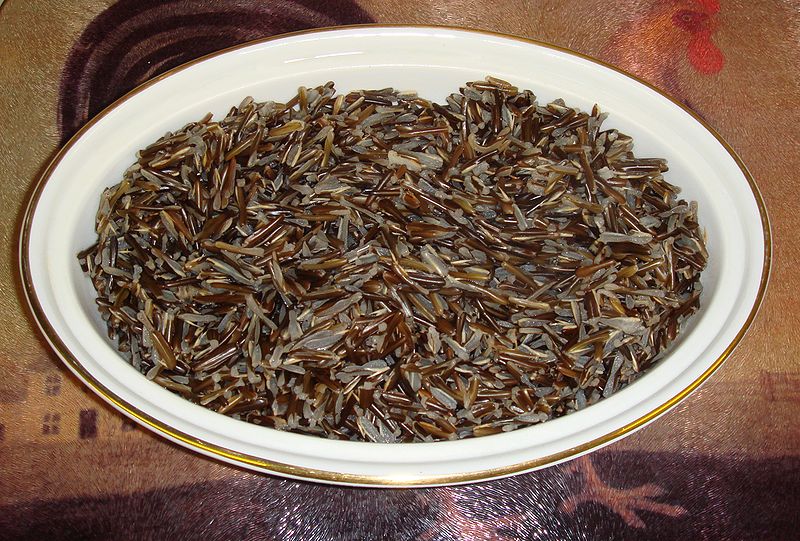
Like cultivated rice, wild rice thrives in mucky or silty conditions with enough fresh or brackish water circulation to provide sufficient oxygen for growth. Abandoned man-made rice fields are ideal habitat for wild rice and the animals that consume its seeds.
 Bateau
Bateau
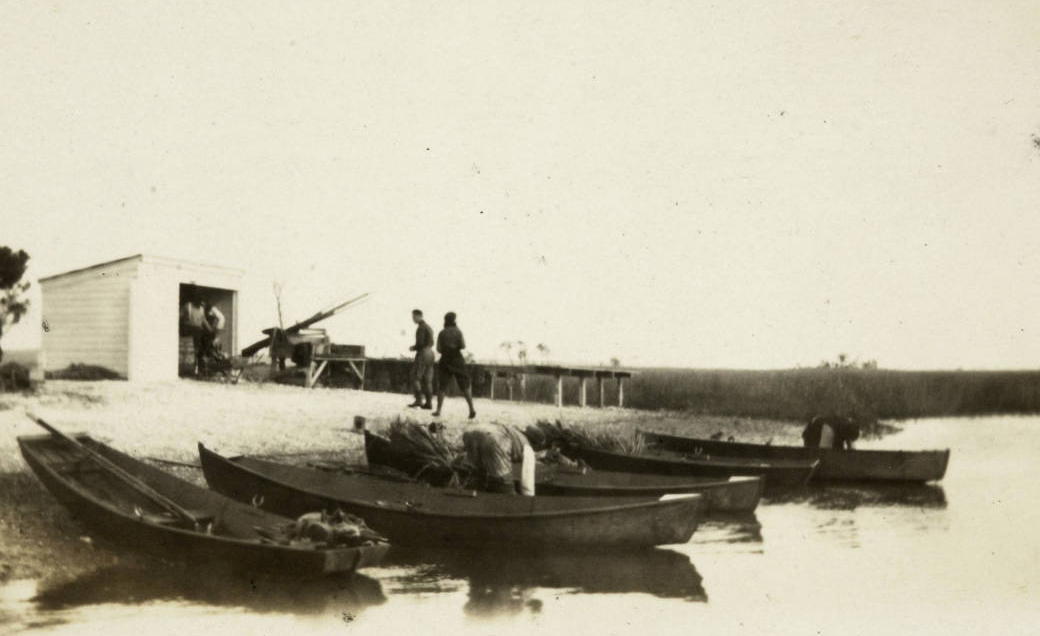
Bateau, the French word for boat, generally refers to a wooden flat-bottomed boat with a low profile and shallow draft, similar to the metal “jon” boat common in the South today. The bateau’s design was ideal for traversing the shallow waters of swamps, tidal creeks, rice fields and other wetlands. With a simple, open interior, these small boats were important tools in the transport of freight such as rice stalks and lumber and as a means to access hunting and fishing grounds.
Before emancipation, enslaved people used bateaux (the French plural is also applied in English) to travel between plantations, belying the idea that plantation communities were isolated. According to historian Melissa Cooper, "people were coming and going all the time."
 Birds
Birds
Abandoned man-made rice impoundments built in the 18th and 19th centuries serve as critical habitat for birds pressured by ongoing development of natural wetland areas. Ducks forage for wild rice and other plentiful food, and many species use the fields as wintering grounds. Ducks expend a tremendous amount of energy during flight, and these undisturbed fields allow for rest and recuperation during migration.
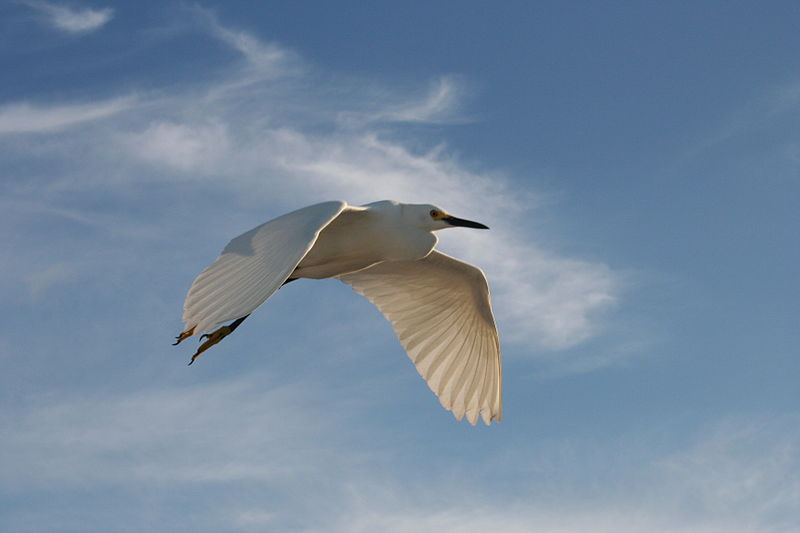
Birds such as the Snowy Egret and Blue Heron also find sanctuary in the fields, safely nesting and breeding in an area deemed undesirable for human occupation. Secretive marsh birds such as rails and bitterns lurk in the understory, while Ospreys and Bald Eagles make nests high atop dead cypress trees.
 Jimmy Bessinger
Jimmy Bessinger
In the 1930s, Clarence Bessinger found work in Georgetown as a game warden, during a time when wardens provided their own firearms and vehicles. With the era of rice production long over, jobs were few and industry was lean, yet the land and its resources endured as the area’s most valuable assets. In addition to public lands, large hunting retreats such as Arcadia Plantation and Hobcaw Barony offered employment to experienced land managers and guides.
Today, as in the past, protected wildlife areas and private hunting retreats benefit from locals’ deep knowledge of the woods and waters. Clarence’s grandson, Jimmy Bessinger, has worked at Hobcaw Barony as a land manager and warden for over 45 years, making him its longest serving employee. Arresting poachers, enforcing game limits, operating heavy machinery, and maintaining controlled fires are only a few of the duties that Jimmy undertakes as caretaker of the property.
 Alligators
Alligators
Alligators, large and small, are a common sight at Hobcaw Barony. The old rice canals, with their fresh or somewhat brackish water and muddy banks provide perfect habitat for the reptile, and stories of encounters with alligators run through the narratives of many of Hobcaw’s former residents. Robert McClary remembered finding one under the family house in Barnyard Village, and Joshua Shubrick told of a cousin who was eaten by an alligator as a child.
In this clip from the Baruch home movies, Barbara Donohoe, shotgun in hand, and two unidentified African-American men, display a small alligator for the camera beside the Bellefield pond. Although the animal appears to be nearly dead, they keep a respectfully cautious distance.
 The Process of Tidal Rice Production
The Process of Tidal Rice Production
Botanist and historian Richard Dwight Porcher explains the process by which plantations exploited the rising and falling tides to cultivate rice.
 Rice Canals from the Air
Rice Canals from the Air
From the perspective of a boat in a Hobcaw Barony rice canal, it is impossible to see that each channel is part of a grid. Only by flying above the landscape, as in this video taken by a camera on a drone, can the network of waterways be appreciated. As the drone takes a 180 degree turn, we can see a number of canals, large and small, carved from cypress swamps by enslaved people to enable the tidal production of rice.
It is hard to imagine that these channels were created by humans laboring with crude wooden tools, or that the ancient trees were cut down and uprooted by hand. As the shot ends, Winyah Bay can be seen at the top of the frame, and the Between the Waters boatman is visible in the bottom right quadrant.


 View Map
View Map